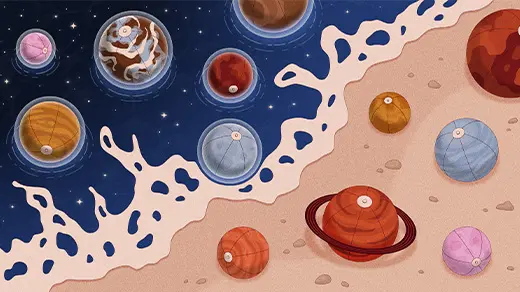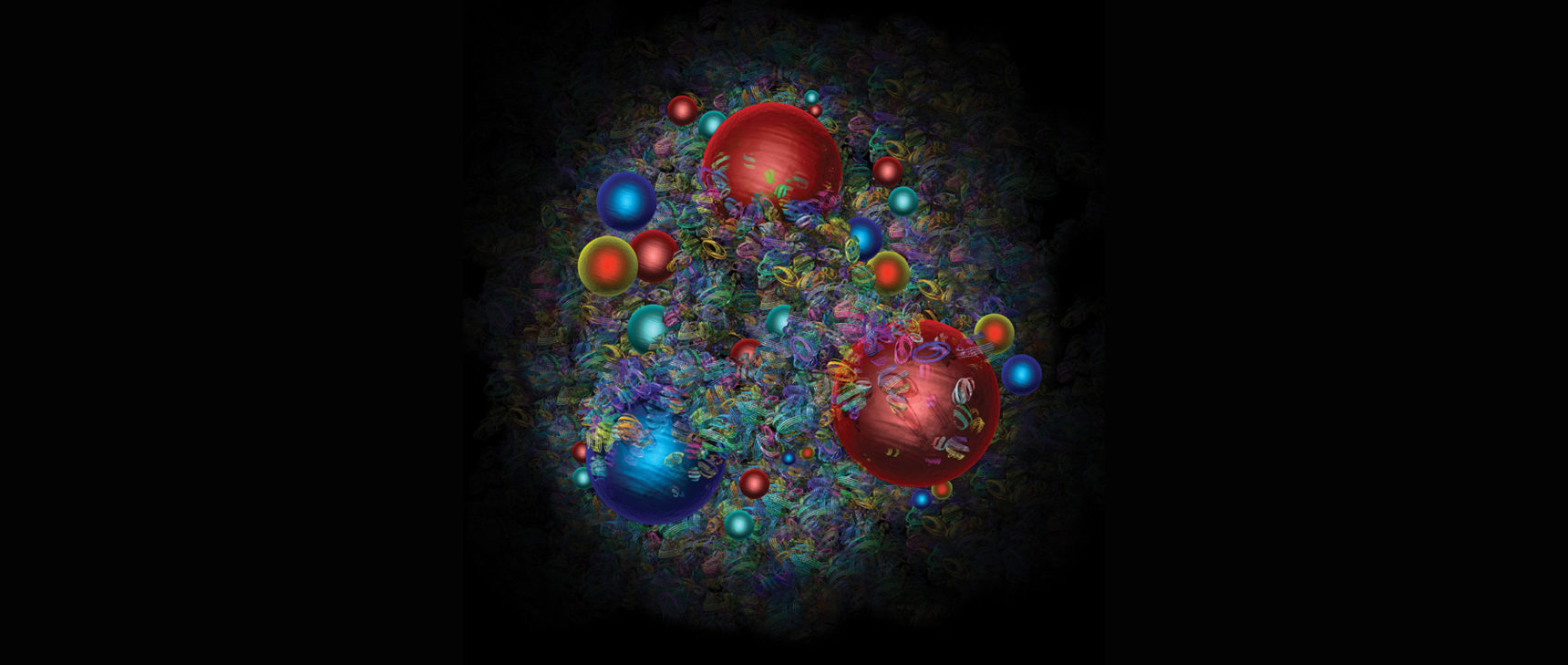Long-Lived Stellar Blast Kindles Hope of a Supernova We’ve Never Seen Before
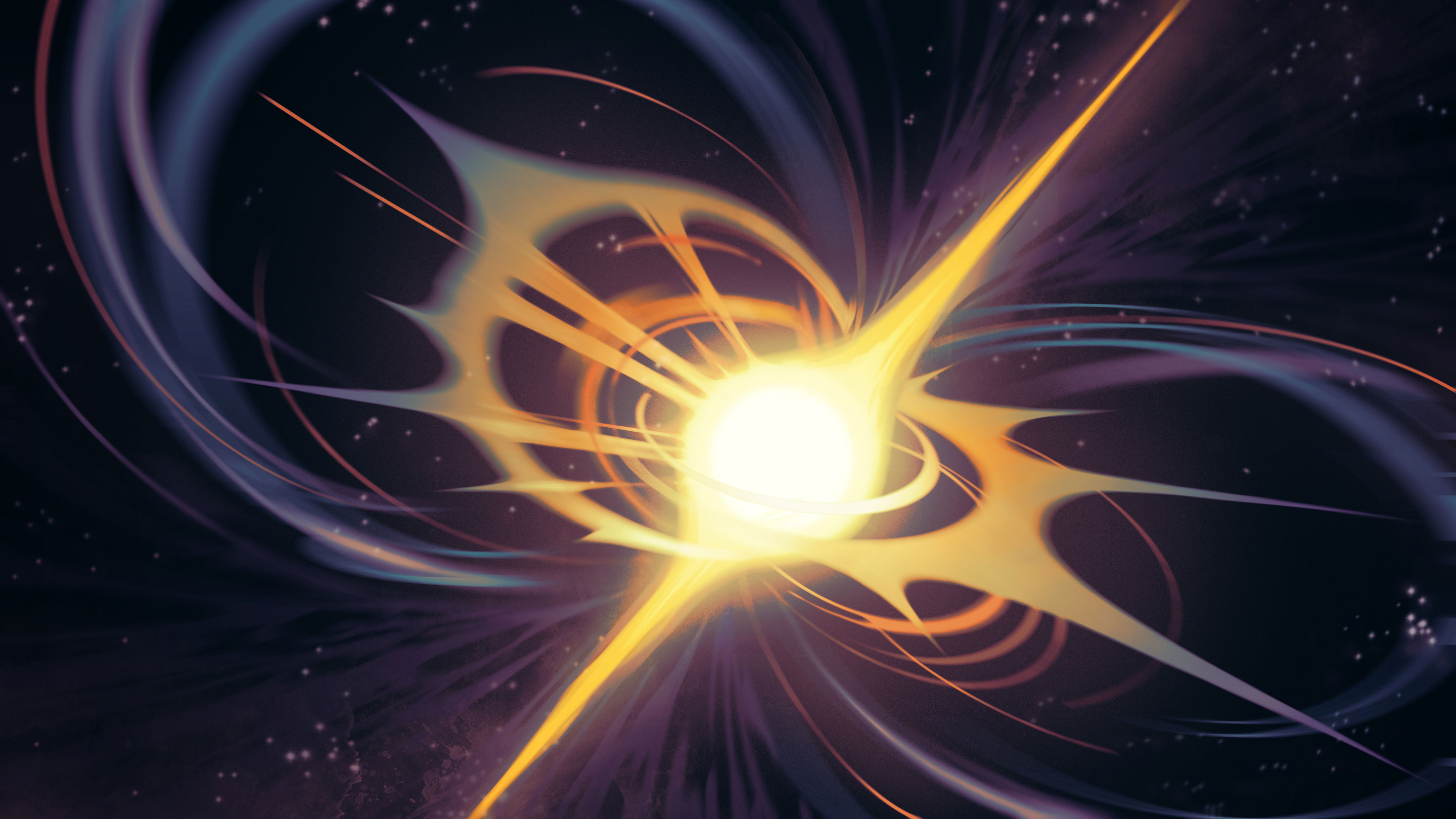
Ashley Mackenzie for Quanta Magazine
Introduction
A billion years ago, something in the whirling darkness of space erupted with a fury that obscured the glow of entire galaxies. Eventually, the light from that cataclysm reached Earth, and in November 2016, it was captured by a group of intrepid humans at the European Space Agency’s Gaia satellite. They found that the conflagration wasn’t just unfathomably energetic, but, like a lonely bonfire, it kept on burning, dimming so slowly that its glow can still be seen years after it began.
This wasn’t a typical supernova, the fireworks at the end of a massive star’s life. This event came from a star so gigantic — at least 100 times the mass of our own sun — that its death was unlike almost anything scientists had ever seen. Stars this big were probably common in the early universe, but they have become exceedingly rare. Even its location was odd; it appeared 54,000 light-years away from the nexus of its dwarf galaxy, far from anywhere you might hope to find a mysterious flash.
As reported this August in The Astrophysical Journal, the phenomenon’s startling nature makes it a strong candidate for one of two types of highly elusive, still hypothetical stellar pyres. And because the supermassive star that exploded makes a great stand-in for the ephemeral stars that existed in the earliest chapters of the universe, the event could help astronomers better understand that long-ago chapter of our cosmic history.
At first, SN 2016iet — as the explosion was dubbed — was thought to be a super-bright supernova, nothing too unusual at a glance.
But this event was remarkably energetic. “We were kind of waiting and waiting and waiting for this thing to be gone,” said Edo Berger, an astronomer at Harvard University and co-author of the new study. “But every time we went to the telescope and observed it again, it was still there, fading so slowly.”
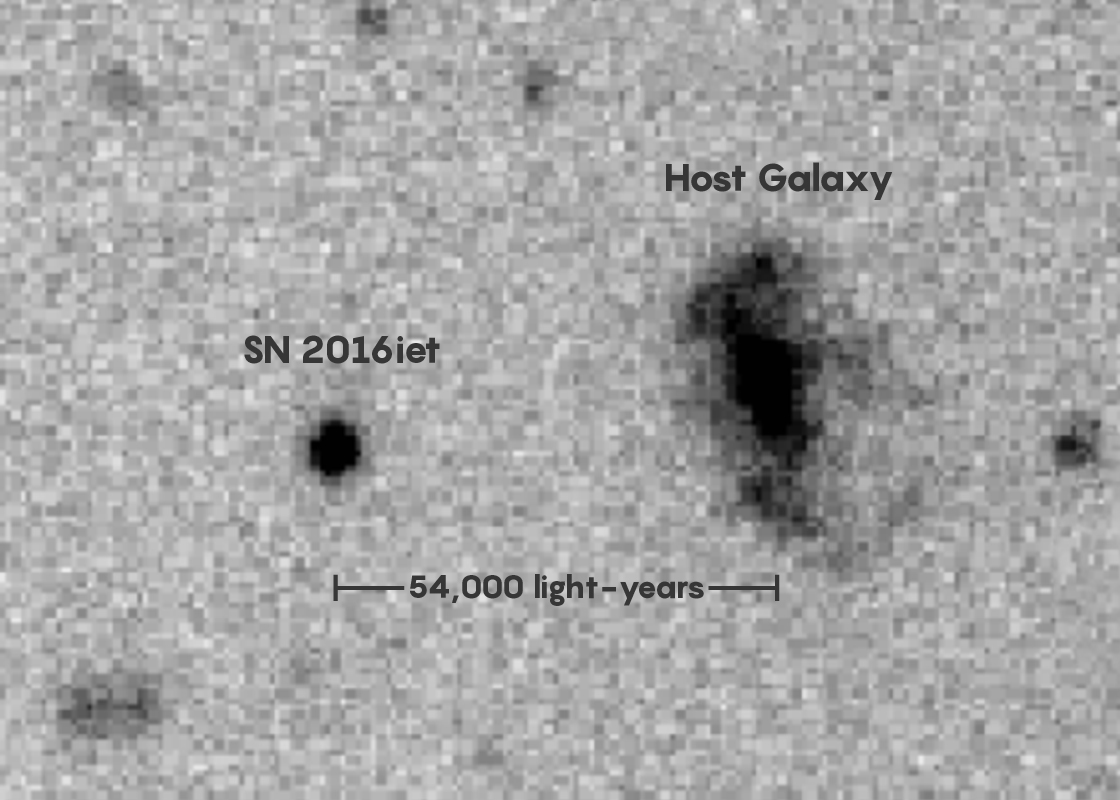
Supernova SN 2016iet was found 54,000 light-years away from its host galaxy, raising questions about how the star formed in the first place.
Courtesy of Sebastian Gomez
By the logic of stellar convulsions, such a huge explosion must have come from a similarly huge star. Supermassive stars are rare; they burn furiously and are short-lived. “They’re the brightest stars in the sky, so like celebrities, they demand our attention,” said Brian Fields, an astrophysicist at the University of Illinois, Urbana-Champaign, who wasn’t involved with the study.
The team found that SN 2016iet took place in an area lacking in metals — the catchall term astronomers use for all the elements heavier than hydrogen or helium. Metals in stars help them to cast off plenty of material over their lifetimes, so that by the end of their lives they usually have a lower mass than what they began with. Stars without metals can’t shed material easily and tend to remain supermassive.
The star that made SN 2016iet was certainly top tier. Using models of stellar explosions, the team estimates that the original star was 120 to 260 times the mass of our sun when it started burning its hydrogen fuel in earnest.
That makes SN 2016iet an extraordinary opportunity.
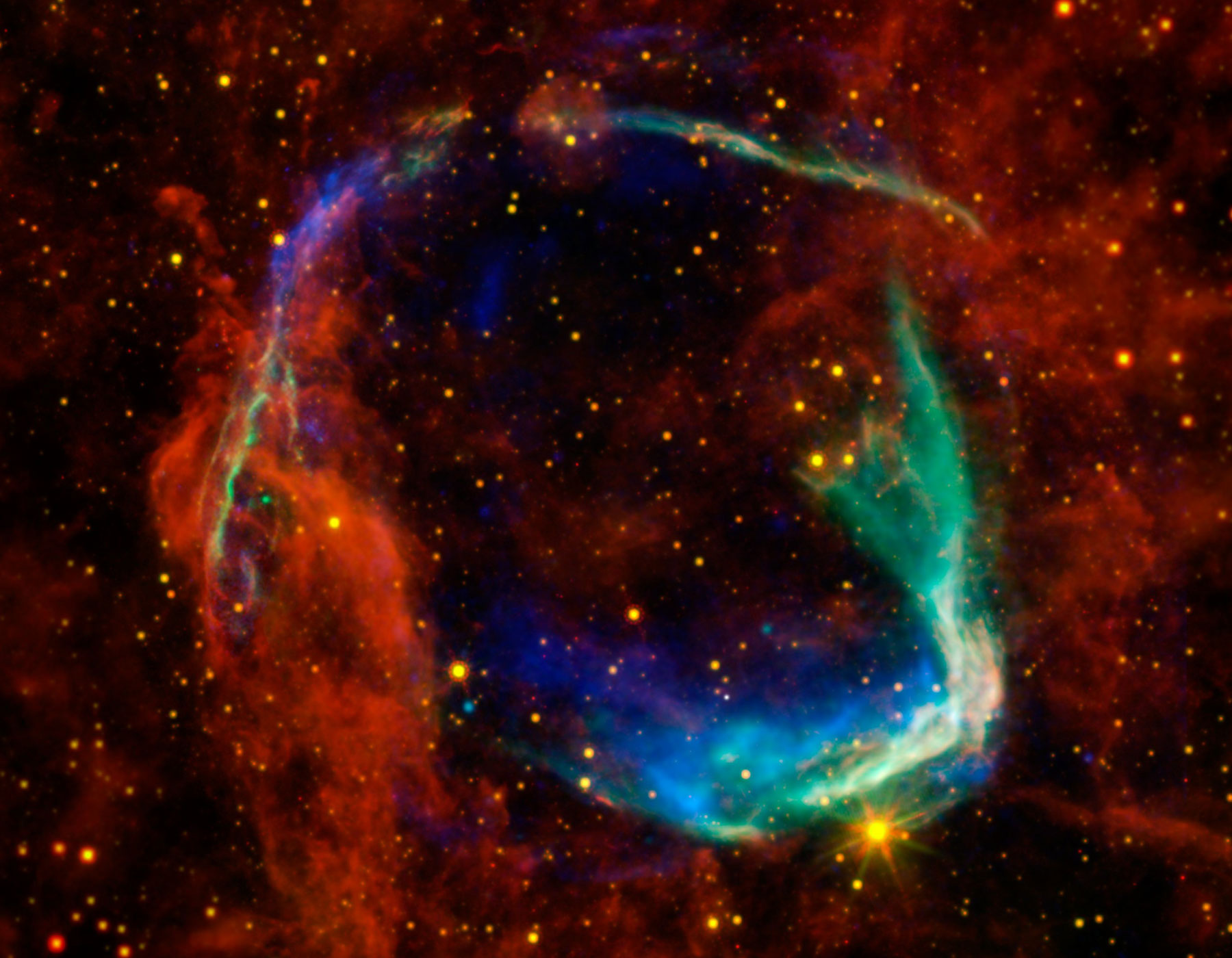
The oldest documented supernova was observed by Chinese astronomers in 185 A.D. This image combines information from four space telescopes to show how that explosion has heated the surrounding gas and dust.
X-ray: NASA/CXC/SAO & ESA; Infared: NASA/JPL-Caltech/B. Williams (NCSU)
The early universe contained practically no metals whatsoever, as stars hadn’t made them yet. Primordial stars, the first metallurgists, made the heavy elements that helped create future generations of stars and, eventually, planets. These early stars were, Fields said, effectively the “first seeds of life.” They were also, he added, “one of the first beacons that lit up the universe and ended the dark ages.”
They were probably supermassive too, which makes the star that caused SN 2016iet a preview of how they may have looked and behaved. Perhaps they were also responsible for the first black holes, said Stan Woosley, an astrophysicist at the University of California, Santa Cruz. Those early black holes may have grown into the monsters that exist today in the hearts of galaxies.
Just how big the star was will play a huge part in determining exactly what kind of luminous calamity the explosion was. It could be one of two types of immensely energetic events that, currently, only exist in theory.
All stars, including our sun, play a gravitational balancing game: A star’s own immense gravity tries to collapse it into a point, but energy from the thermonuclear furnace in the star’s core generates an outward pressure, pushing back.
In some of the most supermassive stars, with said furnaces firing at tremendously high temperatures, plenty of matter-antimatter pairs are created. Some of the energy that would otherwise contribute to the fight against gravity gets soaked up by the manufacture of these pairs. Outward pressure can’t keep up with gravity, which then dominates and makes the star shrink.
Collapse begets cataclysm. The star contracts so violently and the core burns so vigorously that “in one pulse, the nuclear burning blows the star entirely apart,” said Woosley, who was instrumental in the development of the theory of these “pair-instability supernovas.” It’s “probably the most violent thermonuclear explosion in the modern universe,” he said. The blasts are so complete that the entire star is obliterated, and nothing is left behind to form a black hole.
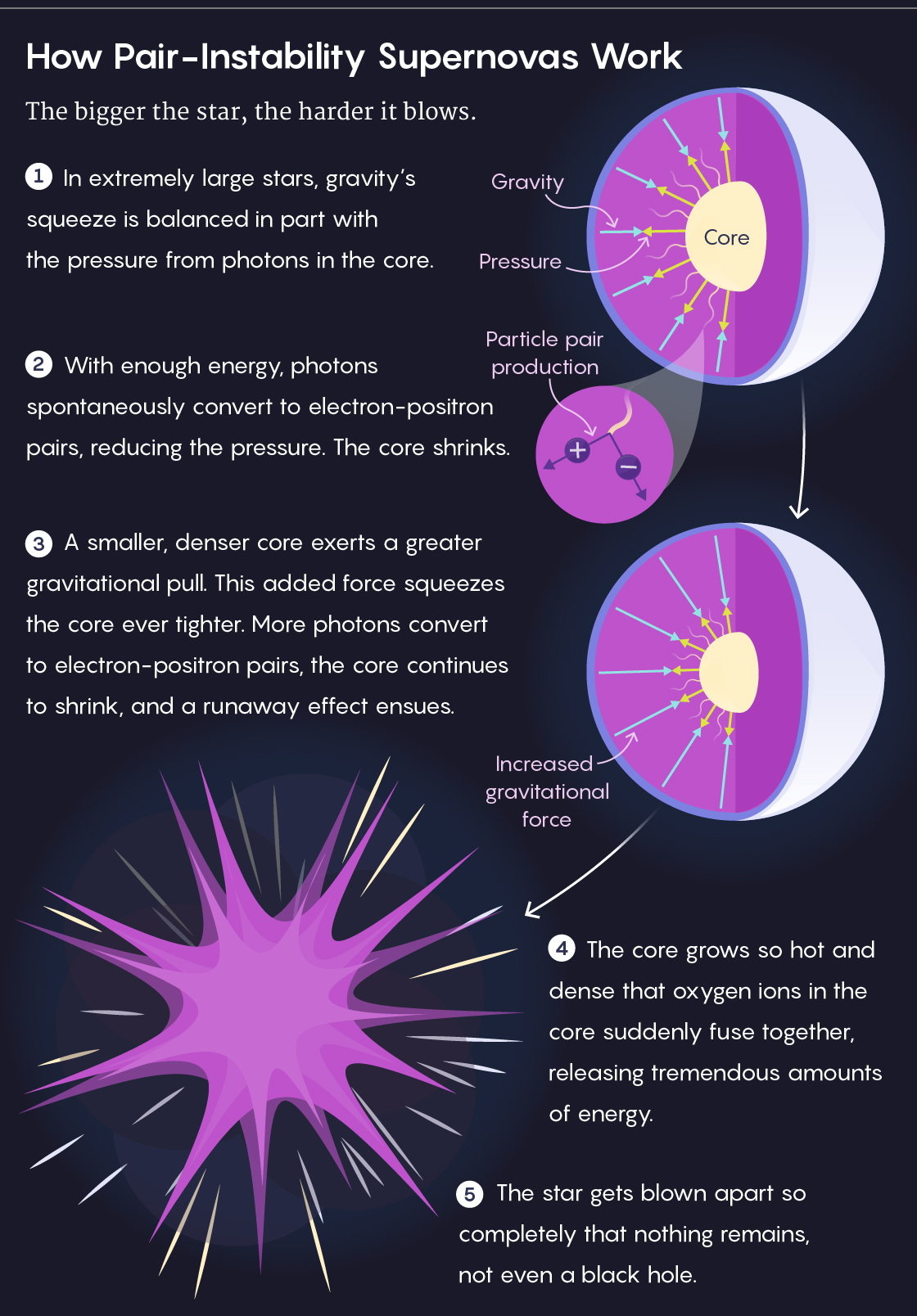
Lucy Reading-Ikkanda/Quanta Magazine
If a star has a lower total mass but is still massive enough for interference from those pesky pairs, it contracts and burns, but not aggressively enough to get torn apart. The star bounces back, jettisoning a giant shell of matter moving at thousands of miles per second out into the universe. The process repeats over time. Newly ejected shells collide with older shells, producing enormous bursts of light. Eventually, so much mass is lost that the creation of new pairs doesn’t significantly affect the star, and it dies in a classic black-hole-forming scenario.
This is known as a “pulsational pair-instability supernova.” To make one of these, the original star during its hydrogen-burning phase must have a mass at least 90 times that of the sun, Woosley said. A full-blast pair-instability supernova requires a star whose mass during its hydrogen-burning phase was 140 solar masses. With a minimum of 120 solar masses, SN 2016iet could fit one of these stories. Berger explained that the longer SN 2016iet continues to produce an afterglow, the higher the estimates of the star’s mass will become.
Yet neither model of stellar ruination is a perfect fit.
The event had two peaks in brightness, which may represent shells of matter colliding. But models say the time between peaks should be on timescales of centuries, not 100 days. In addition, if this was the pulsational type, Woosley said, then the event was too bright for too long. SN 2016iet also shed a lot of mass in just a decade prior to the final blast, said Berger — too much mass far too late to fit the models.
Another puzzling question is how this explosion took place 54,000 light-years from its host dwarf galaxy — an area that appears to lack much of any star-building material. “How could a star like this form effectively by itself?” Berger said.
One idea is that the event happened inside a galaxy, but one we just can’t see because it’s currently being outshone by the explosion, said Sebastian Gomez, a graduate student at Harvard and lead author of the new study. The team is now enlisting the help of the venerable Hubble Space Telescope to search for it.
With SN 2016iet’s hard-to-explain characteristics, two possibilities exist. The first is that the theoretical models for pair-instability supernovas need tweaking to match the observations. Alternatively, the event is neither type of star death, though if so, “it’s going to have to be something really convoluted,” Gomez said, “or something we don’t know about.”
The team will continue to observe SN 2016iet to see if it truly is either type of supernova. In any case, it probably won’t be such a vanishingly rare event for much longer.
Fields explained that the Large Synoptic Survey Telescope, which can see the entire available sky in just three nights, is currently being built in Chile. When it’s ready, by around 2022, it will allow scientists to “see anything that moves, flickers, flares or explodes.”
Stargazers will, he said, find more supernovas each year than in all of human history to date. More beastly stars with convoluted deaths will be identified as well, and our understanding of them will take a giant leap.
Until then, the quest for these hypothetical monstrous star deaths blazes on. “We know these things have to be out there,” Woosley said. “At least, I do.”


